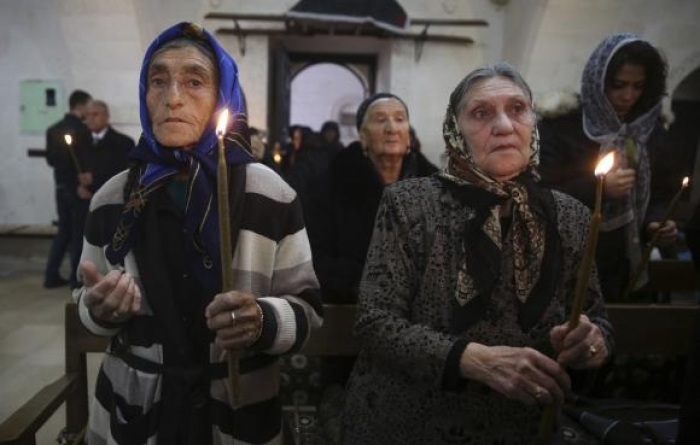Syriac monastery in Turkey reopens to believers after 100 years

A Syriac monastery in southern Turkey has reopened its doors to believers about 100 years after it was seized by the Turkish army and transformed into a military hospital before becoming a prison and warehouse.
Patriarch Ignace Joseph III Younan, head of the Syriac Catholic Church, consecrated the Monastery of St. Ephrem in Mardin city, which was once the heartland of Syriac Christianity, earlier this month and celebrated its first divine liturgy in 100 years, Vatican News reported.
Patriarch Younan anointed the altar, walls and doors with oil of chrism, and then led the ceremony attended by Syriac Catholic prelates from across the Middle East, including the Apostolic Nuncio to Turkey Archbishop Marek Solczyński.
Younan encouraged the congregation to stay focused on Jesus and trust Him, pointing to an inscription above the large cross behind the altar that says, "Look at Him and trust in Him."
The Turkish army seized the monastery during World War I. The building was briefly returned to the Church after the war ended. But a few years later, the monastery was turned into a military hospital. It eventually became a prison and was later converted into a warehouse.
Many Syriac Christians still speak Neo-Aramaic, a language that descended from the language spoken by Jesus. Christians have been living in southern Turkey since the first centuries of Christianity.
Estimates suggest that during World War I, Turkish and government forces killed hundreds of thousands. Today, Syriac Christians comprise a tiny fraction of Turkey's population.
Turkey has a long record of converting ancient religious buildings sacred to its indigenous religious minorities.
In 2020, Turkish President Recep Tayyip Erdogan converted Istanbul's landmark, Hagia Sophia, into a mosque. He also ordered another ancient Orthodox church, the Church of the Holy Saviour in Chora — also known as the Kariye Museum — to be turned into a mosque.
Istanbul's Hagia Sophia, built in 537 A.D. as a Greek Orthodox church, was the seat of Eastern Christianity for 900 years before the city was seized in the 15th century by Sultan Mehmed II, who converted it into an Ottoman mosque. In 1934, modern Turkey's founder, Mustafa Kemal Ataturk, banned worship in Hagia Sophia and designated it as a museum.
Originally built in the early fourth century by Constantine the Great, the Holy Saviour church was converted into the Kariye Mosque about 50 years after the 1453 conquest of Constantinople by the Ottoman Turks. In 1945, the building was designated a museum by the Turkish government. The museum was opened for public display in 1958 after American art historians helped restore the original church's mosaics.





























